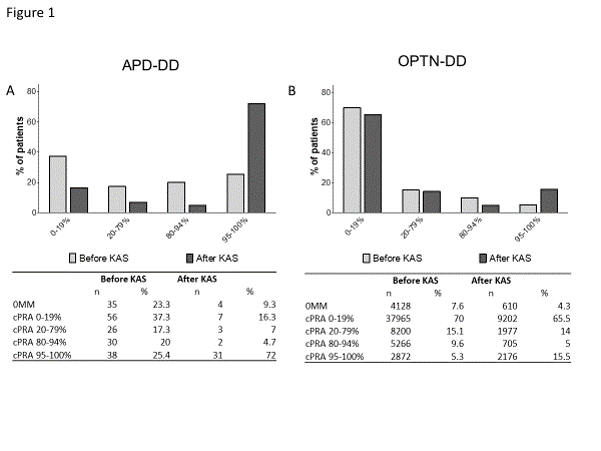Different Options Available For Patients Registered In A Kidney Paired Donation (KPD) Program
University of Toledo, Toledo, OH
Meeting: 2019 American Transplant Congress
Abstract number: D224
Keywords: Kidney transplantation
Session Information
Session Name: Poster Session D: Non-Organ Specific: Public Policy & Allocation
Session Type: Poster Session
Date: Tuesday, June 4, 2019
Session Time: 6:00pm-7:00pm
 Presentation Time: 6:00pm-7:00pm
Presentation Time: 6:00pm-7:00pm
Location: Hall C & D
*Purpose: We examined what happened during a 6-year period to 1,121 end-stage renal disease patients who registered with their willing/incompatible living donors for kidney exchanges with the Alliance for Paired Donation (APD).
*Methods: The OPTN database provided graft outcomes with demographics. All APD-registered patients (2010-2016) were matched to the OPTN waiting list (n = 1,121) and analyzed for Kaplan-Meier death-censored graft survival rates. The p values <0.05 were considered as statistically significant.
*Results: Out of all registered 1,121 patients 65% were transplanted: 37% in kidney paired donation (APD-KPD, APD-other-KPD); 10% with compatible live donors (APD-LD); and 18% with deceased donors (APD-DD). The remaining patients were withdrawn (sick/died/others; 15%), or were still waiting (20%). Detail analysis revealed that 72% of patients with a cPRA ranging 0-94% were transplanted while only 49% of those who were very highly sensitized (VHS) with a cPRA of 95-100%. Interestingly, half of VHS patients were transplanted by KPD and APD-LD programs while half benefited from special OPTN-DD programs (Fig. 1): the zero mismatches (0MM) and the new kidney allocation system (KAS). The 0MM program benefits patients with a cPRA >20%: in the 6-year period, 39 patients (20.2%) were transplanted with 0MM donors, 35 in 60 months prior KAS and 4 during 14 months after KAS (November 2014; Fig. 1A). The new KAS, targeting patients with a cPRA ≥98% and those waiting ≥10 years on dialysis, transplanted 12 out of 43 VHS (28%) prior KAS and 31 out of 43 VHS (72%) after KAS (Fig. 1B). Thus, out of 337 VHS patients 69 benefited from 0MM and KAS, representing 9.7% of 712 transplants in APD-registered patients. APD-KPD, APD-other-KPD, APD-LD and APD-DD groups had similar death-censored 4-year graft survivals to relevant OPTN groups. Even VHS patients had as good results as less sensitized and non-sensitized patients.
*Conclusions: Since APD-registered patients received transplants through different options all patients should be encouraged to search for compatible donors. Expanding donor pool through special programs increases chances for getting a transplant for VHS patients.
To cite this abstract in AMA style:
Stepkowski S, Mierzejewska B, Rees M. Different Options Available For Patients Registered In A Kidney Paired Donation (KPD) Program [abstract]. Am J Transplant. 2019; 19 (suppl 3). https://atcmeetingabstracts.com/abstract/different-options-available-for-patients-registered-in-a-kidney-paired-donation-kpd-program/. Accessed July 13, 2025.« Back to 2019 American Transplant Congress

